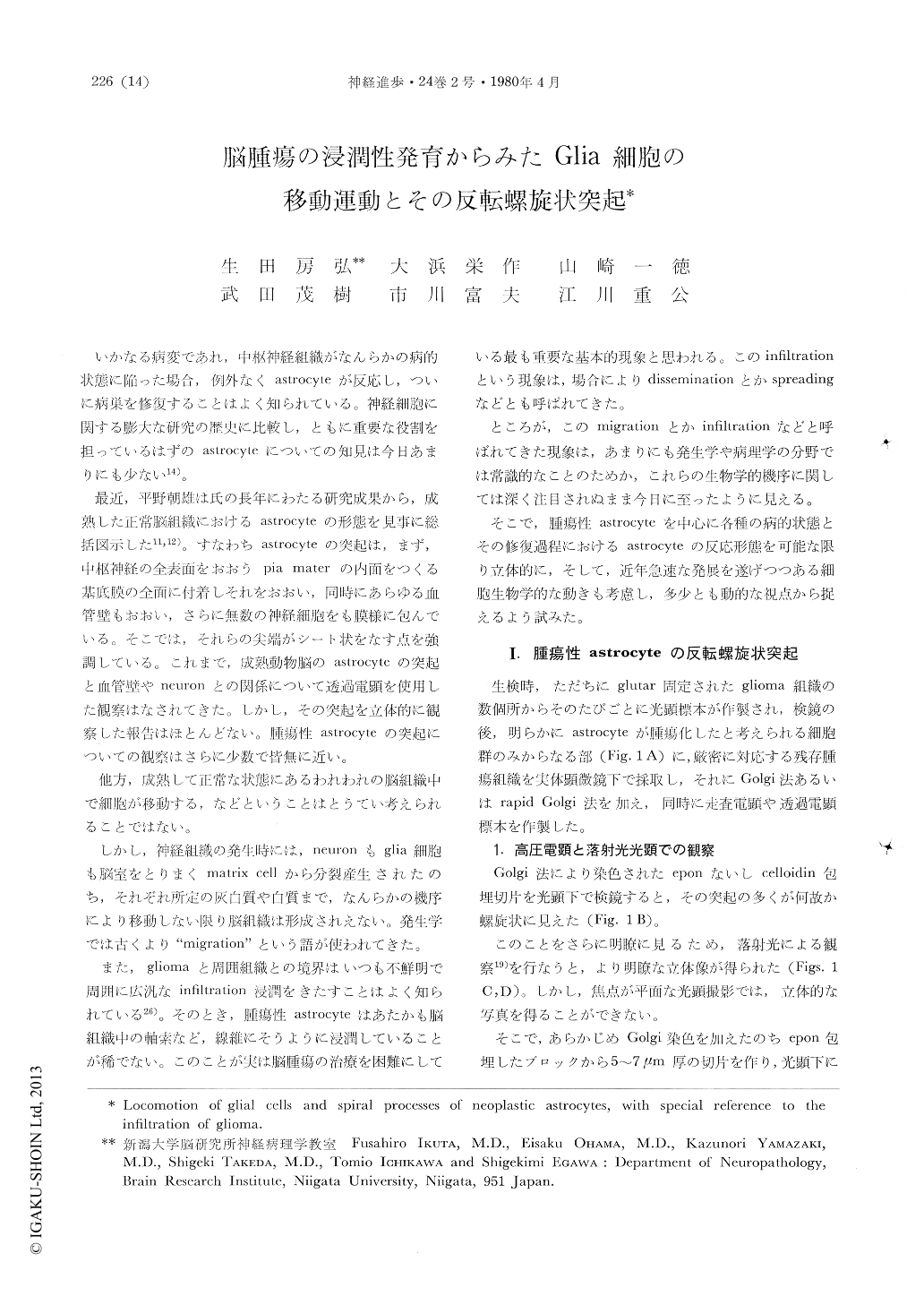Japanese
English
- 有料閲覧
- Abstract 文献概要
- 1ページ目 Look Inside
いかなる病変であれ,中枢神経組織がなんらかの病的状態に陥った場合,例外なくastrocyteが反応し,ついに病巣を修復することはよく知られている。神経細胞に関する膨大な研究の歴史に比較し,ともに重要な役割を担っているはずのastrocyteについての知見は今日あまりにも少ない14)。
最近,平野朝雄は氏の長年にわたる研究成果から,成熟した正常脳組織におけるastrocyteの形態を見事に総括図示した11,12)。すなわちastrocyteの突起は,まず,中枢神経の全表面をおおうpia materの内面をつくる基底膜の全面に付着しそれをおおい,同時にあらゆる血管壁もおおい,さらに無数の神経細胞をも膜様に包んでいる。そこでは,それらの尖端がシート状をなす点を強調している。これまで,成熟動物脳のastrocyteの突起と血管壁やneuronとの関係について透過電顕を使用した観察はなされてきた。しかし,その突起を立体的に観察した報告はほとんどない。腫瘍性astrocyteの突起についての観察はさらに少数で皆無に近い。
Abstract
Observations with high voltage transmission, freeze-fracture-scanning-electron microscope, and even with the light microscope disclosed that most of the processes of the neoplastic astrocyte are spiral (Figs. 1-3), and those spiral processes change their turning direction from dextrose to sinistrose and often further to the opposite direc-tion. The phenomenon was also detected on the processes of the glioblasts (Fig. 5) in the developing human fetus, but not on the reactive or normal adult astrocytes. Morphology of those spiral processes resembles somewhat the veins or tendrils of certain plants (Fig. 7B).

Copyright © 1980, Igaku-Shoin Ltd. All rights reserved.


